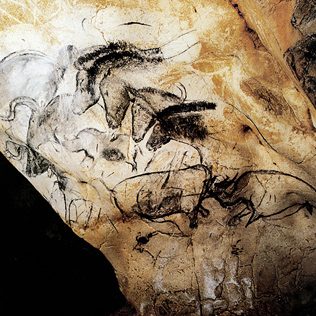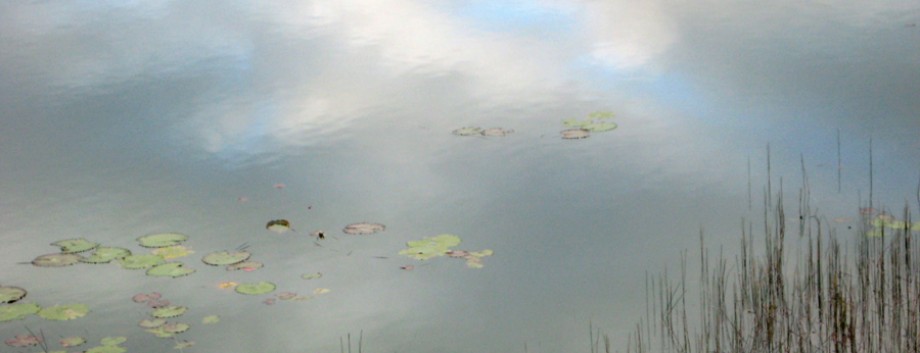In 1994, local cavers Christian Hillaire, Eliette Brunel-Deschamps and Jean-Marie Chauvet discovered a previously unknown cave with extraordinarily preserved, ancient rock art. The cave is located in the Ardèche region of southern France. In 1998, a small team, headed by Dr. Jean Clottes, began research and Carbon 14 dated the art to 30,000-33,000 years old.
Chauvet Cave is about five hours to the east from where I was during June in the Dordogne region, the particular section called the Périgord Noir. This is where I was so fortunate to experience two caves with very limited access, Les Combarelles and Font-de-Gaume, and was simply overcome. A couple of people, whose names have slipped my memory, then suggested I see the documentary The Cave of Forgotten Dreams done by Werner Herzog on the Chauvet Cave. If any who directed me are reading this review, I thank you profusely.
 Herzog managed to produce a film that gives a visceral sense of another such hallowed space. Contained in the Chauvet site, home to cave bears, also rest antiquities – indeed lineage bearers, all that remains from the perceptions and sacred expressions of Paleolithic artists.
Herzog managed to produce a film that gives a visceral sense of another such hallowed space. Contained in the Chauvet site, home to cave bears, also rest antiquities – indeed lineage bearers, all that remains from the perceptions and sacred expressions of Paleolithic artists.
The team allowed to enter was quite small, some researchers and a few filmmakers, and only for limited times. They could touch nothing of the interior, walking on a carefully protected passageway alone. Remembering how overwhelmed I was when entering 10,000-year-old sites, I could only imagine the condensed energy of one 20,000 years older. One young scientist was interviewed and spoke of how, after working in the cave for five days straight, he found it so powerful he had to take a break to absorb it all.

Panel of lions. Source: The Bradshaw Foundation.

Fighting rhinos and four horses. Source: The Bradshaw Foundation.
There were so many similarities to my own visit to such sites in the Périgord Noir, although mine were but a snippet. The awe as to the sophisticated renderings and talent. How they translated movement and power of their subjects. How the very place seemed alive. This was so especially in the sweeping scene of images filmed purposefully in silence. I will confess it brought tears to my eyes.
Remember this is narrative art. The narrator pointed out two sets of lions. In one, the obviously male lion was courting a female who was not ready to accept his advances. She growled at him. In the other, the female had agreed, shown as snuggling the side of the male.
I highly recommend this film for those who wish to gain a new respect and appreciation of our ancient ancestors, and for art enthusiasts who want to trace influences on much later, modern artists.
As an aside, I noted in research elsewhere that when the age of the Chauvet Cave rock art came out, it was contested by those who insisted on adhering to their outdated, ego-entrenched conjectures. This also happened with the Altamira cave in northern Spain. Altamira itself was found by a local hunter in 1868. He told Marcelino Sanz de Sautola, an amateur archeologist who owned the land. In 1879, he began excavation, but it was his young daughter Maria who actually discovered the cave paintings. When Sanz de Sautola attempted to take the findings public, suggesting the art was 10,000 years old, he was declared a fraud and the paintings fake by those of the same ilk mentioned above, plus the Catholic Church. He suffered the effects of public humiliation until his death. Posthumously some twenty years later, he was recognized for his achievements, the age of Altamara cave art not 10,000 but 35,000 years old. An account is given in the little known film Finding Altamira, which can be viewed on Netflix.
The Cave of Forgotten Dreams is available on Netflix and has also been uploaded by viewers onto You Tube. One hour, 35 minutes.



